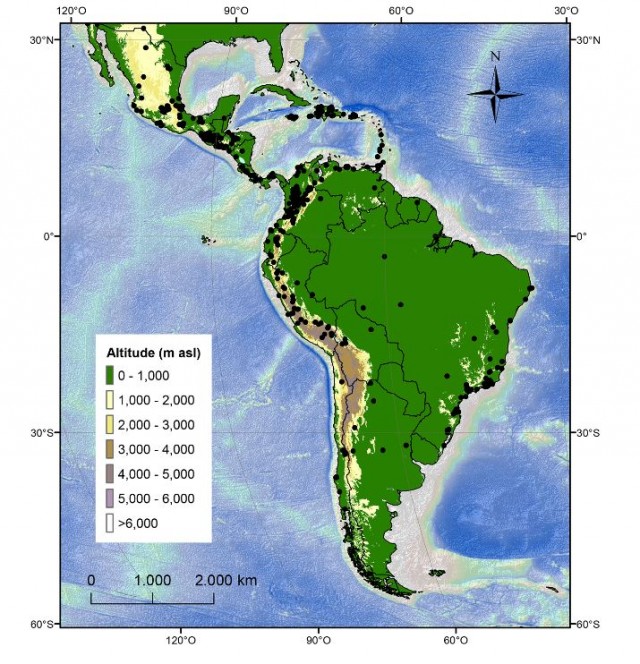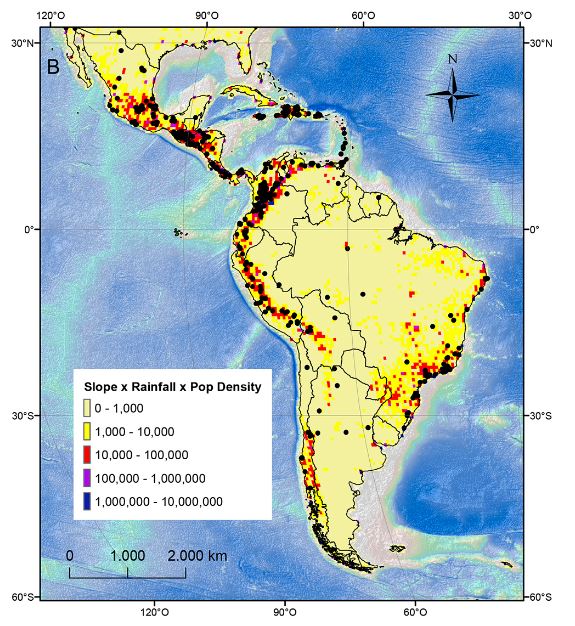24 August 2015
My new paper: human losses from landslides in Latin America and the Caribbean
Posted by Dave Petley
Regional trends and controlling factors of fatal landslides in Latin America and the Caribbean
Together with my colleague and friend Sergio Sepulveda from the University of Chile, I have just had a paper (Sepulveda and Petley 2015) published in the journal Natural Hazards and Earth System Sciences on human losses from landslides in the Caribbean and Latin America. The paper is open access, so it is free to download.
The paper re-examines a component of the dataset that I analysed in my global landslide losses paper (Petley 2012) a few years ago. However, in this case we have improved the dataset by enhancing the landslide search algorithm to include local information, and we have extended the time period to the ten year spell from January 2004 to December 2013. This means that we now have a much better picture of human landslide losses in this region.
I don’t want to rewrite the paper here, so I’ll provide the headlines and give a little more detail on an interesting aspect. Over the ten year period we have recorded a total of 11,631 deaths from landslides in 611 landslide events. Those locations with the highest losses are parts of the Caribbean (Haiti is especially significant), parts of Central America, Colombia, and SE Brazil, as the map below, taken from the paper, shows. Each black dot is a single landslide; the underlying base map shows the height of the terrain.
.
We have looked at the factors that explain this distribution. We have found that the best algorithm is a simple combination of terrain gradient (i.e. slope), mean annual rainfall and population density:
.
This simple algorithm actually does a remarkable job of explaining (and predicting) the fatality-inducing landslide distribution. I think this might open the opportunity to explore future patterns of loss, if we know how population will change and we can model future rainfall patterns. This would be an interesting follow-on study, and would make a great PhD project if anyone is interested.
A key caveat to this study though is that the 10 year period that we studied did not include a very large El Nino event. In the last large one (1997-8) there were extensive landslides in this region. We might expect to see a repeat in the next large El Nino, and the distribution may change too. Of course it appears that such a large El Nino, possibly the largest recorded to date, is currently developing. The next 12 months or so will be very interesting in this part of the world.
References
Petley, D.N. 2012. Global patterns of loss of life from landslides. Geology 40 (10), 927-930. See also my blog post about this paper.
Sepúlveda, S.A. and Petley, D.N. 2015. Regional trends and controlling factors of fatal landslides in Latin America and the Caribbean. Natural Hazards and Earth System Sciences, 15, 1821-1833, doi:10.5194/nhess-15-1821-2015. The full paper available to download as a PDF.




 Dave Petley is the Vice-Chancellor of the University of Hull in the United Kingdom. His blog provides commentary and analysis of landslide events occurring worldwide, including the landslides themselves, latest research, and conferences and meetings.
Dave Petley is the Vice-Chancellor of the University of Hull in the United Kingdom. His blog provides commentary and analysis of landslide events occurring worldwide, including the landslides themselves, latest research, and conferences and meetings.